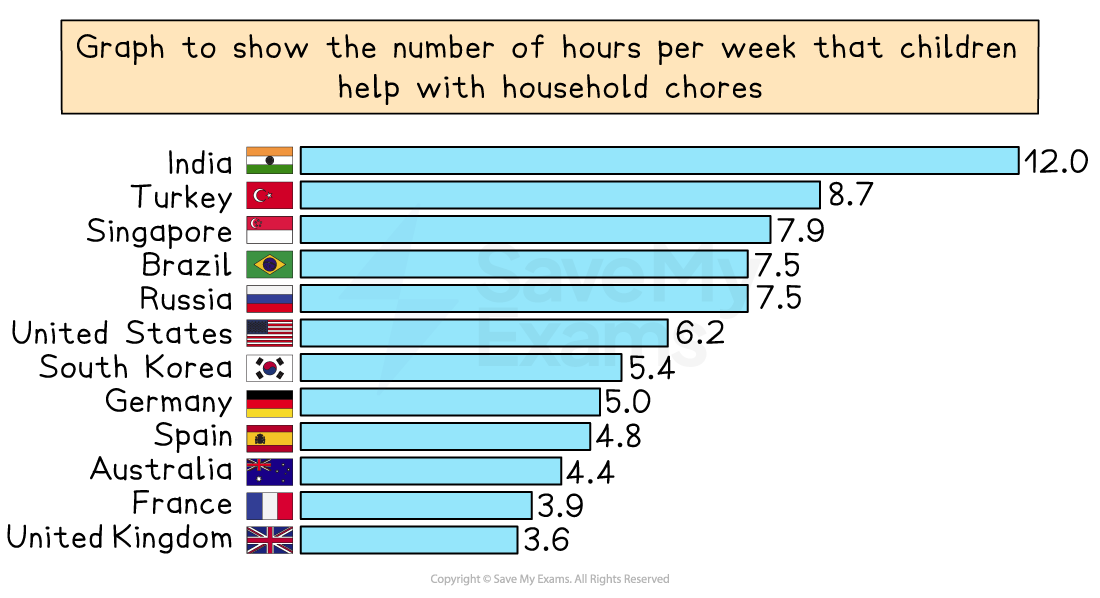Syllabus Edition
First teaching 2025
First exams 2027
Culture & Parenting (DP IB Psychology): Revision Note
Culture & parenting
Worked Example
Here is an example of a Paper 3 source and a 6-mark SAQ using culture (HL extension) in the Human Development context:
Source 2:

Q2: Analyse the findings from source 2 and state a conclusion linked to the claim that parents from collectivist cultures expect their children to help around the house more than parents from individualistic cultures.
[6 marks]
Model answer:
The findings are quantitative, which makes the results easy to compare at a glance and to convert to percentages and statistical testing. On the face of it, these findings suggest that collectivist cultures have high expectations that children contribute to household chores as India, Turkey and Singapore score highest on this measure, with the UK and France (individualistic cultures) scoring among the lowest three countries on the table.
The findings should not be taken as definitive, however: collectivist cultures have a group mentality, which means that chores are shared by all members of the family/community. While an individualistic perspective might be that children should be independent and not expected to share the burden of housework, a collectivist perspective may argue that children need to understand that they are part of a group and that they should contribute to chores along with everyone else.
Guidance
Your analysis should refer to the raw scores (if these are included) and/or the descriptive/inferential statistics presented in the findings
For descriptive stats this may comprise the mean/median/mode as measures of central tendency and the range/standard deviation as measures of dispersion
For inferential stats this may comprise a statement of significance and/or link to the level of probability used
You should always state which condition of the IV performed better
You should comment on what the stats seem to suggest about performance per condition
If relevant, you should comment on what the data tells you about the population, e.g., is this a normal distribution or is it skewed?
If the research is qualitative then you should focus on how the findings have been categorised/presented and whether there are drawbacks or limitations to how it has been gathered (e.g., sample size, potential bias)
You should draw a conclusion based on what the data in the source/study tells you about what is being investigated
E.g., do the findings suggest that X does affect Y?

Unlock more, it's free!
Did this page help you?